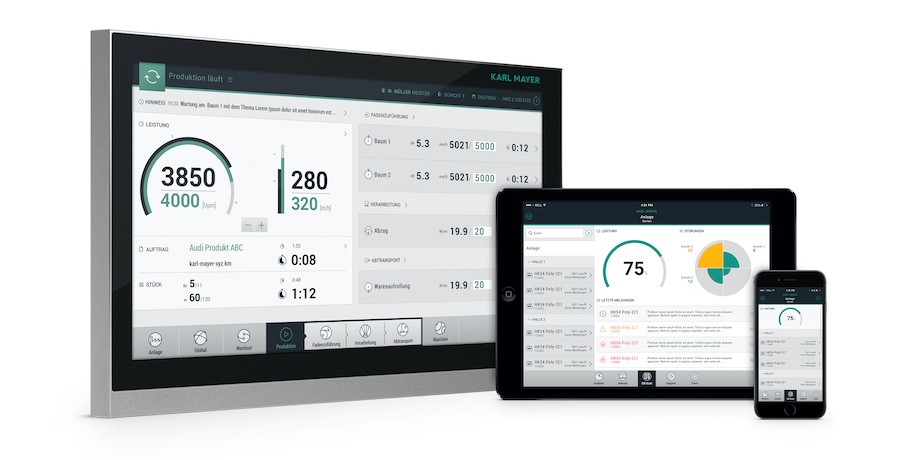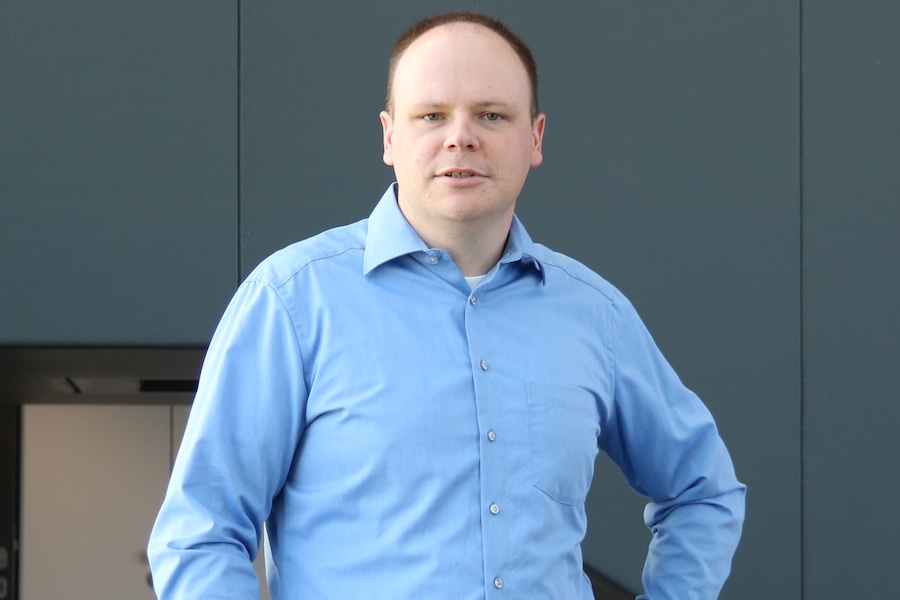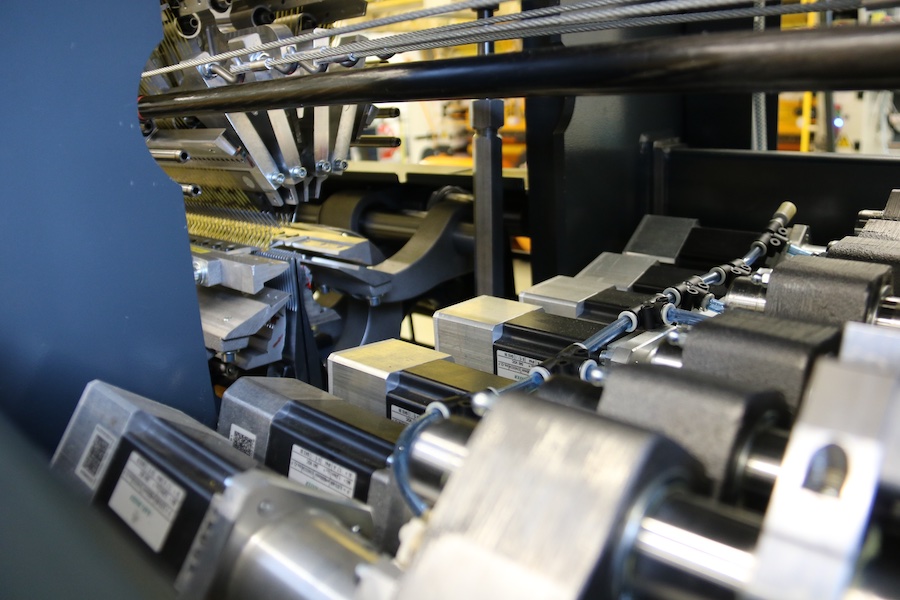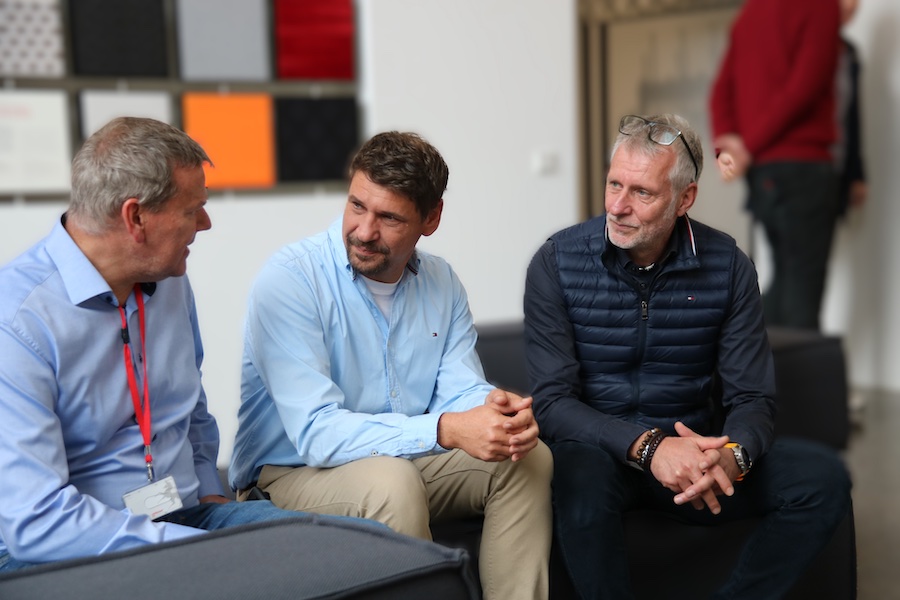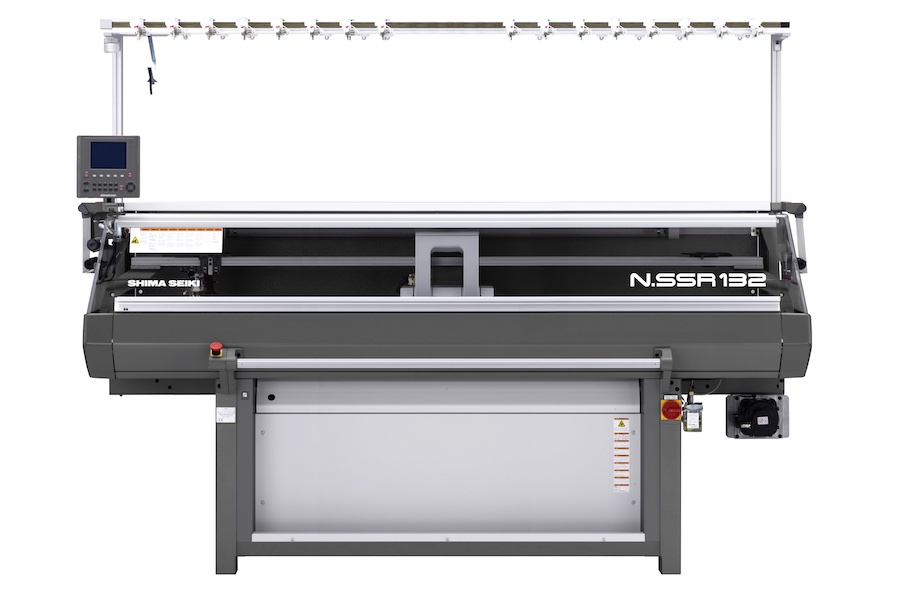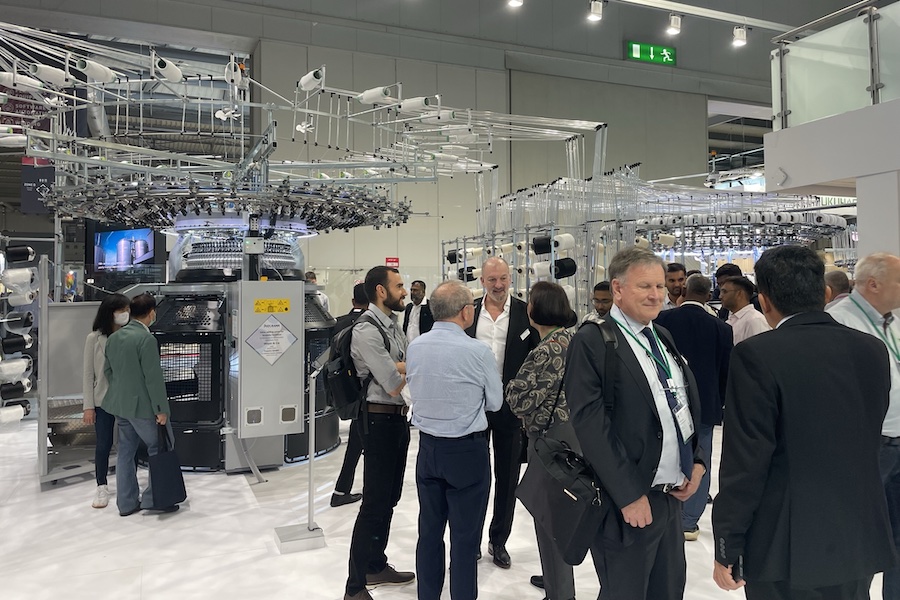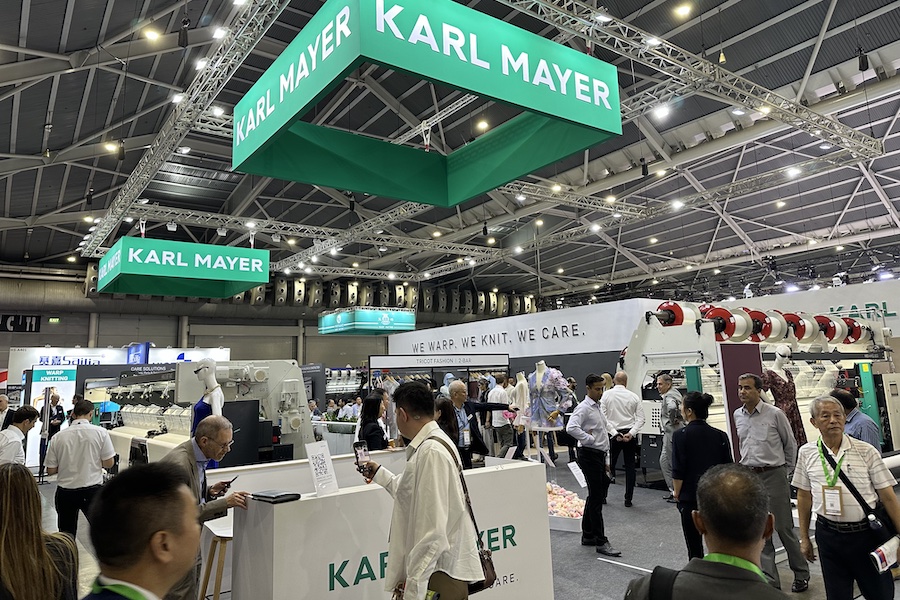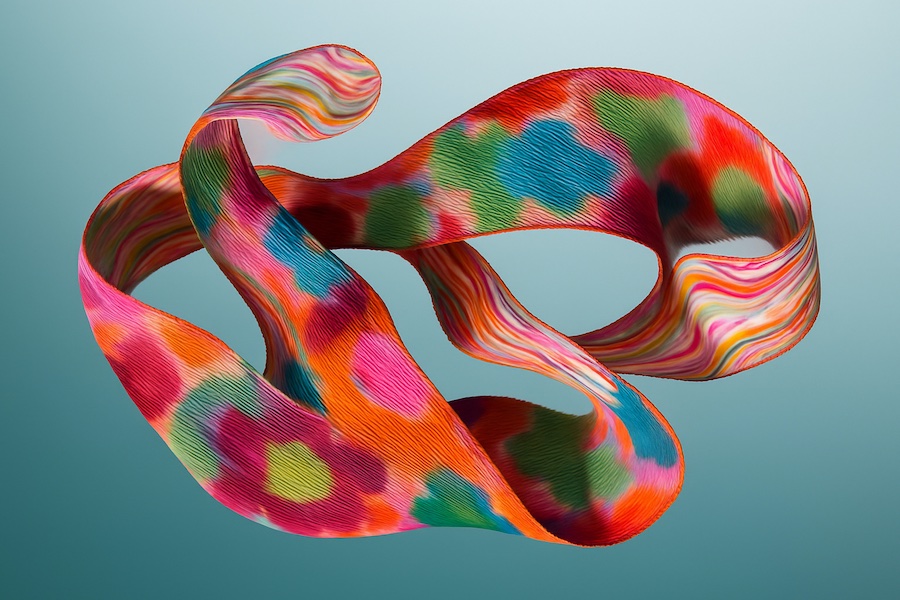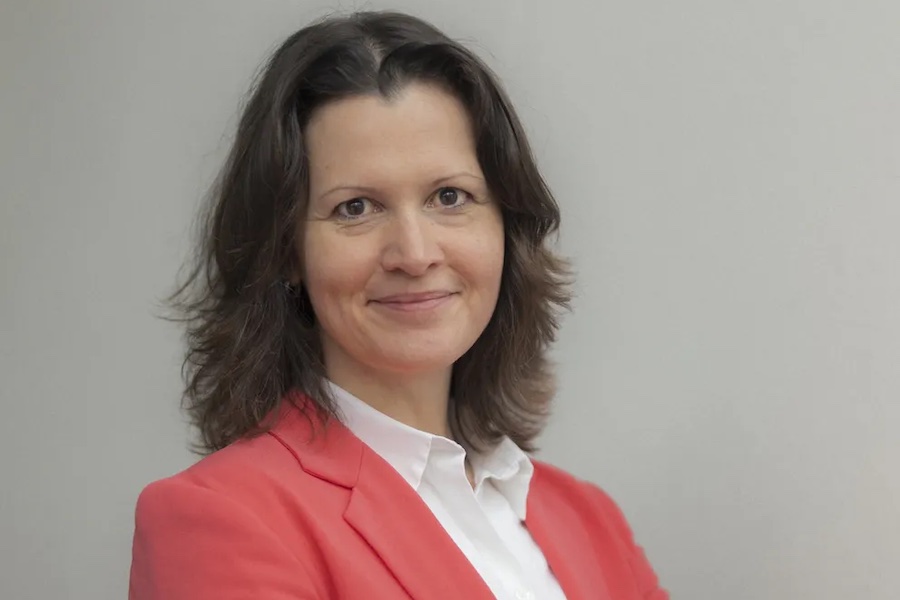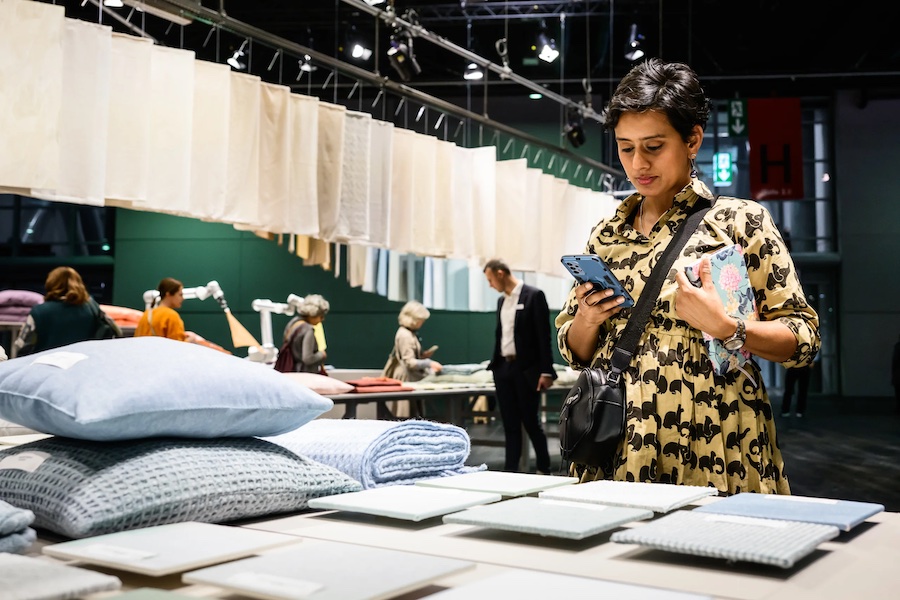#Knitting & Hosiery
20 years of KAMCOS®, two decades of pioneering in warp knitting machine control
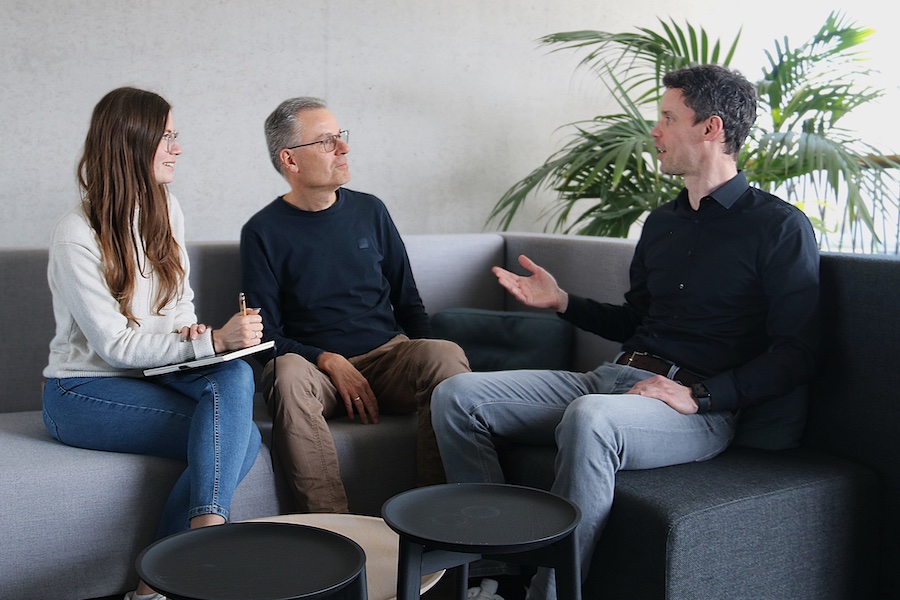
KARL MAYER is celebrating the anniversary of a revolutionary solution this year
Larissa Ruhmann from the Corporate Communications team at KARL MAYER took the anniversary as an opportunity to talk to the experts at KARL MAYER about the changes that have taken place in warp knitting, but also to find out more about trends and future innovations. Mario Görner, who played a key role in the work on KAMCOS® 1 in the early 2000s, and Dr Philipp Erler, Head of Control Platform at KARL MAYER's Warp Knitting business unit, met with her for an interview.
LR: Mr Görner, as a pioneer from the very beginning of KAMCOS® development, you have helped to write history. What were the biggest changes in the première version?
MG: Thanks to KAMCOS® 1, we were the first to launch a warp knitting machine with pure touch-screen operation. That was very innovative! And it took courage, because there were many doubts and concerns, even internally. But in the end, the advantages were convincing. Touch screen operation itself is already much easier. Another benefit was the ability to enter article data via a standardised user interface instead of on different systems and to retrieve it from a central file instead of from different sources when the article needed to be produced again. The basis for all this was our new platform concept. All control components, i.e. the computers for yarn feed, pattern control and yarn breakage control, were centralised. I had developed a special communication protocol for their exchange with the main control system via a standardised bus system.
LR: You were also involved in the further development. What was new about KAMCOS® 2?
MG: KAMCOS® 2 makes the service considerably easier. Software updates can now be carried out easily, remotely and without our service specialists on site. We have also launched a new era in the operating concept. We asked our customers and our own colleagues for new, useful options for machine handling and developed a new operating philosophy based on their answers. The key point was more usability and an inviting look. For the implementation, a designer created a state-of-the-art user interface with its own colour and operating concept using web technology. This allows for a wide range of customisations without great effort. Our new user interface design received the 2016 DESIGN AWARD from iF International Forum Design GmbH in the “Communication - Apps/Software” discipline.
LR: Mr Erler, let's now look to the future. In which direction is the future work heading? What trends do you see in machine control in general?
PE: We are continuously developing KAMCOS® 2 for all machine segments. There are usually two new releases per year. We incorporate new functionalities into the upgrades, in particular to increase the productivity of the machines. These further developments are significantly influenced by the guiding principles of Industry 4.0 and increasingly also Industry 5.0. We continuously monitor the resulting changes and analyse whether we can use the related potential to optimise KAMCOS® 2.
As KAMCOS® 2 comprises not only the user interface but also the entire control platform, we are also continuously optimising under the „hood“. There is a general trend towards merging the virtual world of IT with the physical world of industrial automation. The combination of IT and OT (operational technology) ensures greater efficiency in development, but also facilitates the implementation of robust cyber security concepts. To this end, legal requirements such as the EU Cyber Resilience Act must be complied with in future.
LR: So you have challenging tasks ahead of you. You and your team can build on the experience of 23 years of KAMCOS® development in realising them. What are the most important lessons learnt?
PE: Compared to other machine control systems, KAMCOS® 2 offers specific strengths. These must be retained. In addition, our proven strategy is and remains: one KAMCOS® for all machines!
Our control platform has evolved over the years. This has shown that traceability, comprehensibility and user-friendliness are still important. Basic modifications must be as self-explanatory as possible to be accepted. Here it is important to find a compromise between the realisation of individual customer wishes and intuitive, clear operation. Even after all these years, this is still a challenge in which the configurability of the user interface by the customer is certainly a key to success.
LR: Thank you for the interesting conversation!
